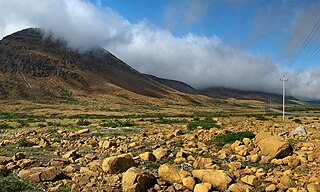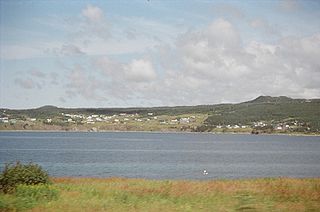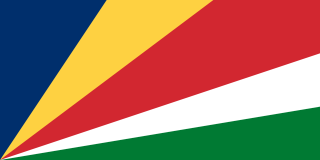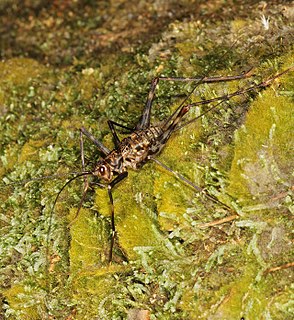
Roseau is the capital and largest city of Dominica, with a population of 14,725. It is a small and compact urban settlement, in the Saint George parish and surrounded by the Caribbean Sea, the Roseau River and Morne Bruce. Built on the site of the ancient Kalinago Indian village of Sairi, it is the oldest and most important urban settlement on the island of Dominica.

Gros Morne National Park is a world heritage site located on the west coast of Newfoundland. At 1,805 km2 (697 sq mi), it is the second largest national park in Atlantic Canada; it is surpassed by Torngat Mountains National Park, which is 9,700 km2 (3,700 sq mi).

Morne Diablotins is the highest mountain in Dominica, an island-nation in the Caribbean Lesser Antilles. It is the second highest mountain in the Lesser Antilles, after La Grande Soufrière in Guadeloupe. Morne Diablotins is located in the northern interior of the island, about 15 miles north of Dominica's capital Roseau and about 6 miles southeast of Portsmouth, the island's second-largest town. It is located within Morne Diablotin National Park.

Pissing Mare Falls are located in Gros Morne National Park, Newfoundland, Canada. The falls, at 350 metres (1148 ft) high, are among the highest in eastern North America, and drop from the plateau above into Western Brook Pond.

Morne Trois Pitons National Park is a World Heritage Site located in Dominica. This area was established as a national park by the Dominican government in July 1975, the first to be legally established in the country. The National Park is named after its highest mountain, Morne Trois Pitons, meaning mountain of three peaks. The park is a significant area of volcanic activity. Features within the part include the Valley of Desolation, a region of boiling mud ponds and small geysers; the Boiling Lake, Titou Gorge, and Emerald Pool.

Rocky Harbour is a town located on the western edge of Newfoundland, near the entrance to Bonne Bay. The harbour was previously known as Small Bay or Little Harbour. This town is home to Gros Morne National Park, a World Heritage Site.
Franco-Seychellois are people of French origin living in the Seychelles. They form the country's second-largest ethnic group.

The Seychelles scops owl, also known as bare-legged scops owl or syer is a rare scops owl species, which only occurs in the Morne Seychellois National Park on the Seychelles island of Mahé.

Gros Morne is a mountain located in western Newfoundland, near the coastal community of Rocky Harbour in Gros Morne National Park. At 807 m (2,648 ft) high, it is the second highest peak on Newfoundland, exceeded only by The Cabox.
Phoenicophorium, thief palm, or latanier palm, is a monotypic genus of flowering plant in the Arecaceae family. The sole species is Phoenicophorium borsigianum.

The following outline is provided as an overview of and topical guide to Seychelles:
Articles related to Seychelles include:

Morne Diablotin National Park is a national park in the northern mountain ranges of Dominica, an island nation in the Caribbean. The park comprises 8,242 acres, amounting to 4.4% of the nation's area. It was established in January 2000, primarily to protect the habitat of the endangered sisserou parrot, an endemic bird species that is a national symbol of Dominica.
Morne is an Old-French word for a small mountain. It may refer to:
Gros Morne or Gros-Morne may refer to :

The Mahé highlands and surrounding areas Important Bird Area occupy the central and north-western part of the island of Mahé in the Seychelles archipelago of the western Indian Ocean.

The Seychelles frog is a species of frog endemic to Mahé, Silhouette and Praslin islands in the Seychelles. It inhabits the floor of damp rainforest at altitudes from 150 m (490 ft) to 991 m (3,251 ft) above sea level. Higher altitude sites are considered to be more climatically stable and more suitable. The species is present in Morne Seychellois National Park, Silhouette National Park and Praslin National Park.

The Mahé boulder cricket is an insect species endemic to Mahé island in Seychelles. This species of cricket is only found in two localities, the Morne Seychellois National Park and "La Reserve". However, the species had been not recorded since 1909, until its rediscovery in 2014. It is a restricted range species, with an area of occupancy less than 10 square kilometres (3.9 sq mi) and with a very fragmented population.














